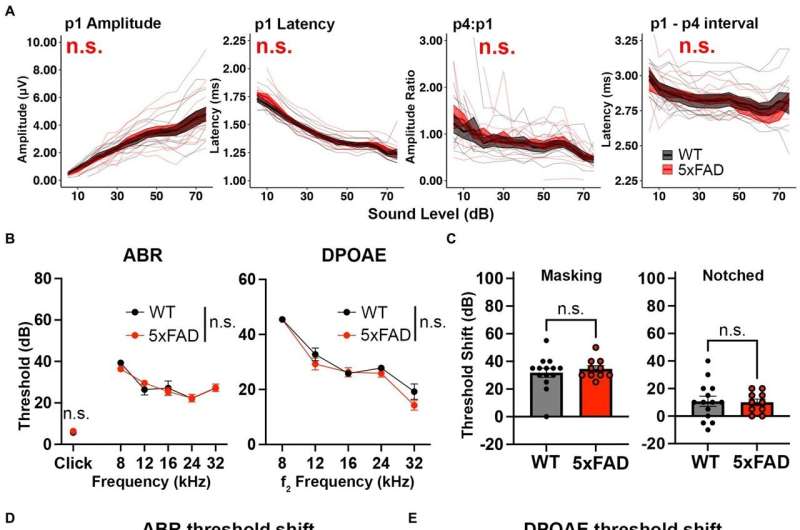This article has been reviewed according to Science X's editorial process and policies. Editors have highlighted the following attributes while ensuring the content's credibility:
fact-checked
peer-reviewed publication
trusted source
proofread
A chance observation finds potential hearing biomarker for Alzheimer's disease

Science lends itself to questions, changing hypotheses, and chance findings. Recently, in the White Lab at the Del Monte Institute for Neuroscience at the University of Rochester, Neuroscience graduate student Daxiang Na was reviewing data for one project but instead uncovered something unexpected. He discovered that where plaques associated with Alzheimer's disease are found in the brain may contribute to hearing loss.
Na was conducting hearing tests on mice with amyloid beta, the main component of protein plaques and tangles found in Alzheimer's. While looking at two different transgenic mouse models of the disease, he found for one model, called 5xFAD, the older mice had hearing changes similar to what is found in people with Alzheimer's disease. The other model did not demonstrate these hearing changes, nor did younger mice in the 5xFAD group.
"It was a chance observation," said Na, who is first author of a paper with these findings in Frontiers in Neuroscience. "Both mouse models had amyloid beta protein, but where we found the plaque varied, and that may be why hearing loss varied across the groups."
Researchers found that the brains of older mice from both models had plaques in the hippocampus and auditory cortex. But the brain of mice with hearing changes also had a small amount of plaque on the auditory brainstem, suggesting this area may be sensitive to disruption from plaque found in Alzheimer's. Researchers discovered that the plaque reduced the brainstem's ability to coordinate responses to sound.
"This may explain why Alzheimer's patients have auditory symptoms," said Patricia White, Ph.D., professor of Neuroscience and senior author of the study. "We think the location of plaques may be more important to hearing decline. It could be a potential biomarker to track disease progression because it could be assessed with amyloid PET imaging. Our data also suggest that regular auditory Brainstem Response assessments could help with diagnosis."
More information: Daxiang Na et al, Increased central auditory gain in 5xFAD Alzheimer's disease mice as an early biomarker candidate for Alzheimer's disease diagnosis, Frontiers in Neuroscience (2023). DOI: 10.3389/fnins.2023.1106570



















